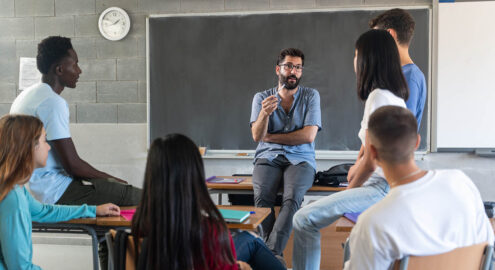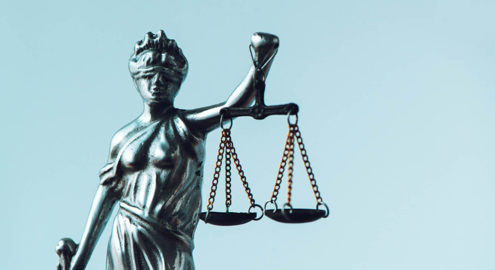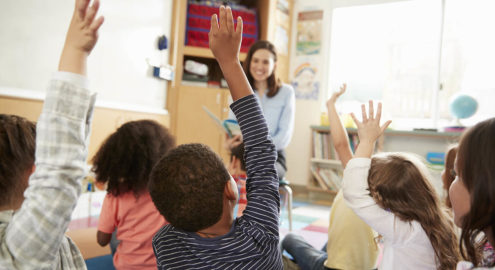What Is It?
According to the Collaborative for Academic, Social, and Emotional, Learning (CASEL), social-emotional learning (SEL) is “the process through which children and adults understand and manage emotions, set and achieve positive goals, feel and show empathy for others, establish and maintain positive relationships, and make responsible decisions.”
Responsible decision-making is one of the five components that make up CASEL’s model of SEL. It means the ability to make positive, constructive decisions about how to behave, based on consideration of ethical standards (i.e., right and wrong) as well as relevant social norms and safety concerns.
Here, we use the term ethical decision-making and responsibility for this component in order to emphasize the ethical dimensions of what it means to make decisions that are both personally and socially responsible. From small, everyday choices to larger and more consequential ones, educators face a myriad of decisions with ethical implications. How do we decide to do the right thing, or even what “the right thing” is?
While observing in the classroom of her mentor, a more experienced teacher at the same school, a beginning teacher notices that her mentor seems to favor certain students, calling on them more often and praising their ideas more even when other students have expressed the same things. This bothers her, but she doesn’t want to get on her mentor’s bad side.
A principal works at a school in a neighborhood where the parents’ association raises large amounts of money to fund enrichment activities like art and music. The district is considering implementing a system where funds raised by parents’ associations will be partially redistributed to lower-income schools. While the principal does wish all schools could have such activities, the activities at his school will be reduced if the new system is put in place, and he doesn’t want his students to miss out. He also knows that many of the parents at his school will find the new system unfair.
Skills involved in ethical decision-making and responsibility include:
- Noticing and identifying problems
- Understanding the different aspects (e.g., moral, social, emotional, practical) of challenging situations
- Realistically evaluating the potential consequences of various actions
- Considering the well-being of both oneself and others; balancing individual interests with the greater good
- Valuing ethical/moral principles, such as justice, fairness, and the rights and welfare of all people
- Applying ethical standards to personal and social behavior
- Recognizing the role of emotions in decision-making and integrating them with other concerns
- Solving problems in intentional and appropriate ways
- Reflecting on one’s own actions
The concept of ethical decision-making and responsibility is closely tied to the other components of SEL. For example, to implement a discipline policy fairly, a teacher needs to confront their own biases (self-awareness) and be able to respond thoughtfully rather than react when students misbehave (self-management); they also need to show curiosity and empathy towards the students and their circumstances (social awareness) and be able to build caring relationships with students while maintaining high expectations (relationship skills).
Why Is It Important?
If we as educators want to live lives of positive impact, and especially if we want to cultivate ethical growth in our students, we have to start with ourselves—by reflecting on our own values and behavior, understanding how we and others think about right and wrong, and always striving to live up to our moral principles. (Note: Though they sometimes have distinctions in meaning or connotation, the terms “ethical” and “moral” are generally used interchangeably.)
Educators are constantly communicating values and ethical messages to students, whether they mean to or not.
- Though some people may feel that school is not the best place for students to learn about morality, the truth is that the work of teaching is inherently moral. Teachers inevitably serve as ethical role models for students, and schools and teachers convey moral messages (i.e., what is right vs. wrong) and other values (i.e., what is important, desirable, etc.) all the time, in both explicit and implicit ways.
- The pattern of implicit ways in which schools socialize students and convey values—not through the academic curriculum, but through school policies, priorities, climate, interpersonal interactions, etc.— is known as the “hidden curriculum.”
- By explicitly addressing values and ethical issues with students, educators can be more intentional about the messages they convey; this also encourages students to consciously and critically reflect on their own values as well as the messages they receive.
When teachers understand and incorporate moral development principles into their classroom management and teaching, students respond better and show improved reasoning abilities.
- Across cultures, when judging social situations, both adults and children (as young as three-year-olds) can distinguish between issues that are moral (inherently right or wrong, such as because they hurt people or are unfair) and aspects that involve other considerations (e.g., social norms, rules dictated by authority, personal choices, safety). When deciding what to do, we have to balance between these different domains of social knowledge.
Kids know that hitting someone else for no reason is wrong. Even if their teacher said it was OK, or if they went to a different school where everyone did it, it would still be wrong, they say. On the other hand, if asked whether it’s OK to wear a swimsuit to class, they would likely say no—but if the principal allows it, or if it’s the tradition in another school, then it’s probably all right.
- When teachers respond to student misbehavior in a way that matches the domain of the transgression—for example, responding to a moral transgression (e.g., hitting) by talking about the harm done, and responding to a breach of a norm (e.g., talking out of turn) by referencing the classroom rules and disruption to order—students rate the responses better, and rate the teachers as more knowledgeable and effective.
- When discussion of social domains is integrated into the academic curriculum—such as by explicitly discussing which features of historical events had moral implications and which features had to do with social conventions—students show higher levels of reasoning and a greater ability to balance different considerations.
Strengthening moral identity (how important being a good person is to one’s sense of self) encourages people to make ethical decisions.
- Moral reasoning (figuring out what is right or wrong) and moral identity (wanting to be a person who does the right thing) are both important for ethical decision-making, especially in difficult situations.
- Moral identity is linked to moral action, such as donating money to charity, and to moral emotions, such as caring about people different than oneself and feeling guilty after doing something wrong.
- Simple cues, like reading lists of moral principles or writing stories using moral terms, can remind people of their moral identity and make them more likely to behave prosocially; on the other hand, performance-based incentives can turn people away from moral identity, making unethical behavior like lying or cheating more likely.
- When people have a strong, internalized moral identity, they are more motivated to behave prosocially even when they don’t get any recognition for it; one way to work towards this is by focusing on the internal (vs. external) rewards of doing the right thing.
Reducing moral disengagement (when people do things that they know are wrong, but distance themselves from the actions and consequences) helps people do the right thing more often.
- Research has found that moral disengagement is less likely in people who are empathetic and have strong moral identities, and more likely when people are cynical and feel that what happens is out of their control.
- Moral disengagement, unsurprisingly, is linked to unethical decisions and behavior.
- Using ethical tools as simple as an honor code can remind people of their moral values and identities, and thus reduce moral disengagement and unethical behavior.
Practices

Moving Forward with Hope

Assessing Your School Climate

Developing the Courage to Speak Up

Stories of Moral Beauty

Facilitating Bridging Discussions

Bring Inspiration to Staff Meetings

Strategies to Promote Courageous Dialogue

Promoting the Development of Schools and Staff

Building Relationships and Trust With Staff

Eight Inner Strengths for Leaders

Making Values-Informed Decisions

Self Check-In Journal

Understanding Justice

Mindful Reflection Process for Developing Culturally Responsive Practices

Personal SEL Assessment and Reflection

Supporting SEL at Grade-Level or Content Area Team Meetings

Common Beliefs Survey: Teaching Racially and Ethnically Diverse Students

Modeling SEL for Students

Do you want to dive deeper into the science behind our GGIE practices? Enroll in one of our online courses for educators!


